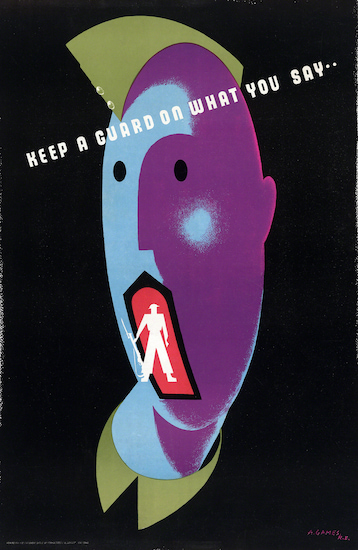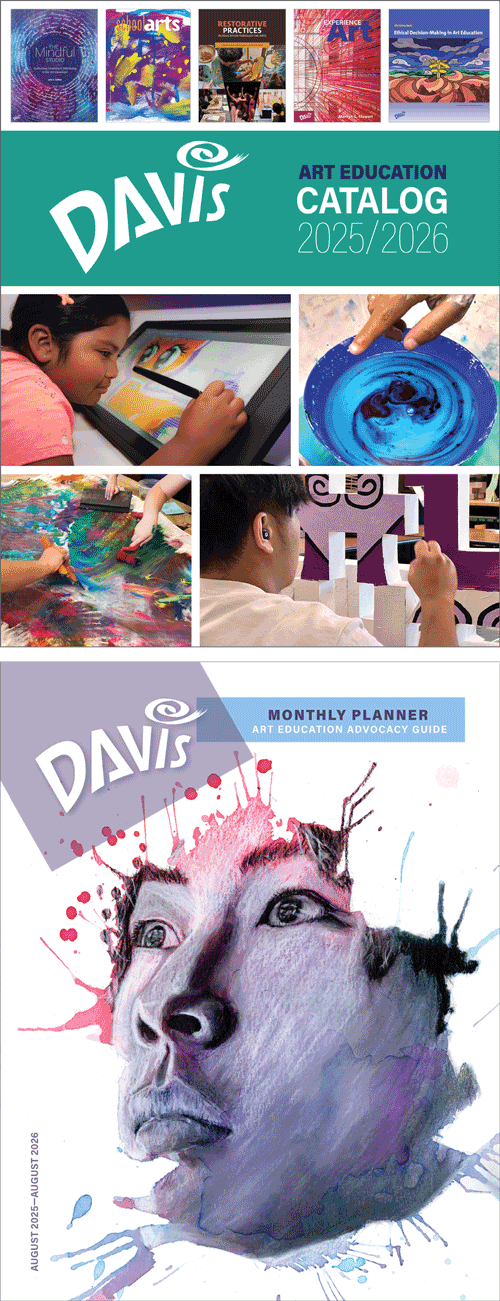Artist Birthday: Abram Games
A conservative dating of the so-called Golden Age of posters is the 1890s up to World War I (1914–1918). However, poster art continued to develop and flourish through the 1920s into World War II (1939–1945). Poster art was particularly vital during both World Wars, and the art of graphic artist Abram Games certainly proves that innovative poster art existed during World War II.
Artist Birthday for 29 July: Abram Games (1914–1996, Britain)
Abram Games was a prolific graphic designer of posters, particularly during World War II.
 |
| Abram Games, Keep a Guard on What You Say, poster, 1941–1943. Photolithograph on paper, 73 x 49.3 cm. Image The Museum of Modern Art, New York, © 2025 Artist or Estate of Artist (MOMA-P1278) |
Games won a London City Council poster competition in 1935, and from 1936 to 1940, he was a freelance poster designer, primarily for London Transport and Shell Oil Company. The design director at Shell helped Games become the official poster artist for the War Office during World War II (1939–1945). He designed almost 100 posters for the war effort, the most famous being those that encouraged women to join the initiative on the home front. His posters are typified by an economy of shape with maximum impact of message. Keep a Guard on What You Say admonishes the public not to share gossip about the war that might be overheard by a Nazi spy. It literally embodies the same idea as “loose lips sink ships”, based on the fear that there were Nazi spies everywhere.
Beginning in the 1700s, handbill and small circulars were the precursors to the poster in Western art. These missives were either hand-painted or produced using a printmaking medium, such as engraving, woodcut, or etching, to make them easy to mass produce. Handbills covered a wide range of subjects, from religious ideas (Martin Luther’s Ninety-Five Theses nailed to the church door in 1517) to political protests (Paul Revere’s broadside engraving of the Boston Massacre in 1770).
The birth of the poster was made possible by the invention of lithography in 1798. This process, in which a design is reproduced from a drawing on a limestone stone slab, revolutionized the dissemination of information to the public. Lithography was the first new printing process in the West since the invention of the woodcut and intaglio processes. It immediately became popular for advertising and illustration because it allowed for a wide range of nuance. It made it easier to mass-produce images for magazines and books because the image did not need to be carved from a plate.
The first color lithographs began to evolve as early as the 1840s. This process involved printing the image using multiple stones, each with a different color The most sophisticated color lithographs used up to twelve stones. By the 1900s, classically trained artists designing posters for advertising was a well-established tradition.
Before World War II, British poster art focused predominantly on travel advertisements for trains, public transport, and automobiles. During the 1930s, product posters adapted aspects of modern art, and this trend continued for posters created for the war effort. One of the dominant themes of World War II poster art on both sides of the Atlantic was “loose lips sink ships,” imagining Nazi German or Japanese spies on every street corner.
Abram Games was born in London, the son of a Latvian photographer. He briefly studied at Saint Martin’s School of Art in London, but left without finishing, disillusioned by the conservative academics and high tuition. He served as an apprentice (1932–1936) at the commercial design firm of Askew-Young and assisted his father in his photography business.
Correlations to Davis programs: Explorations in Art 2E, 6th Grade, Unit 5.6; A Personal Journey 2E, Unit 4.3; Communicating Through Graphic Design 2E, Chapter 2; Experience Art 1E, Unit 6.5

Comments